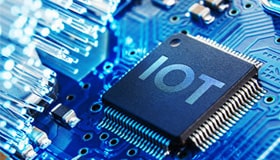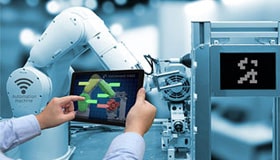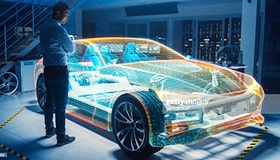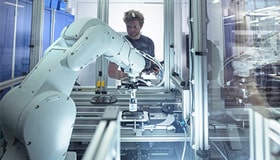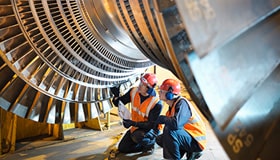Intelligent Sensor Fusion with Smart Sensors
Sensor Fusion and Smart Sensor
The white paper 'Smart Sensors – enabling the Intelligent Internet of Things' discussed how the IoT world is enabled by smart sensors featured with low power consumption, wireless connectivity, security protections, and fusion techniques. Creators get the best advantages of new generation smart sensors to make intelligent IoT systems. This blog focuses on smart sensors and how they are used to implement an intelligent sensor fusion system in some application areas.
Sensor fusion combines data from different sensors for more complex analyses, which is impossible using sensors singularly or separately. Other than acquiring various magnitudes of data, sensor fusion manages and combines this data with multiple strategies to offer effective, consistent responses. Sensor fusion can be smart or not, depending upon the sensors used in the system, meaning that smart sensors make the fusion smart.
The development of fusion techniques depends upon the nature of the system under analysis, to improve the decision-making process into specific actions. In the case of sensor fusion, two situations are considered. In the first, different signals are used for the fusion done on sensors. In the second, data is merged. This data need not be of different magnitudes but must have equivalent sensors in varied situations.
The traditional structure is of three levels, which function sequentially: acquisition followed by data merger, a fusion of characteristics, and merger of decisions. All three levels function with information sourced from different classes ( Figure 1). The low or first level is made of various sensors that collate signals from multiple variables such as chemicals, physical quantities, or images. The second level manages and processes the obtained signals. The main information is squeezed from these signals. Finally, there are manipulation classes in the third level (high), which create a fusion of symbols like characters, recognised information, and strategies. This level also has decision algorithms for recognition and transmitting the information. Sensor fusion helps to drive new applications and subsequently helps feed into the phenomena known as Big Data.

Figure 1: The flow of a sensor fusion system
Since the application heavily influences the fusion sensor configuration, it is questionable whether any universal technique is a uniformly superior solution. However, standard architectures like JDL Fusion, Waterfall Fusion Process, Boyd, and the LAAS Model may be adopted as per application requirements.
Sensors take measurements to provide environmental data. These measurements are usually noisy, and it is good to process them and reconstruct the observed parameters. Sensor fusion uses specific algorithms for smoothing, prediction, and filtering, similar to the Convolutional neural network, Central limit theorem, Kalman filter, Dempster-Shafer, and Bayesian networks for optimal results. These algorithms find use in aircraft altitude detection, systems orientation, and traffic situation analysis in three-dimensional space.
Driverless cars need accurate information about their surroundings to make suitable driving decisions and thus use sensor fusion. Several industrial and consumer applications include traction control, smartphones, industrial robots, automotive, fitness bands. Tablets and IoT require sensor fusion capabil
Smart sensors have their own communication system, which allows them to integrate the sensing element into the network. Smart sensors are different from just a standard sensor, as they integrate the sensor, communication, signal conditioning and decision-making to a single system. In simple terms, inside a single module, the sensors acquire all physical quantities. Then, these signals are electronically conditioned by A/D converters, filters, etc and processed by microprocessors and microcontrollers. The subsequent communication stage transmits data using different means through Xbee, cable, wireless, Bluetooth, in a network with many other sensors for post-processing elements and data analysis. The user may remotely configure the entire system or on the device (Figure 2).

Figure 2: The flow of a smart sensor
The main applications of smart sensors are environmental monitoring, agriculture, transport and traffic, logistics, industrial, hospital, lighting, aerospace, energy conservation, automotive, and telecommunications. Presently, IoT systems provide a bigger opportunity where devices and services become 'smarter' through sensors being able to measure almost every conceivable parameter, including pressure, inertia such as acceleration, orientation, general motion, location, and temperature. A capture of one of such parameters may add considerable device functionality, but incorporating several generates a holistic functionality.
There is a relationship between biomedical and sports applications, applying the idea of sensor fusion and smart sensor utilisation to quantify and qualify the physical variables that involve the human body. In such cases, some variables can increase performance and monitor a person's health condition for heart rate, force, acceleration, etc.
For example, in cycling, this is applied to both the performance improvements of riders and the rehabilitation of injured athletes, preventing future injuries. Data of different kinds find use, such as power, oxygen consumption, biomechanical measurement of variables, heart rate, and effective force to the pedal. These are analysed considering their relevance in athletic performance. Some analyses can be performed in real-time to make corrections during exercise, thus offering the athletes pedal stroke profiles. The athlete’s foot angle on the pedal is vital to transfer the strength of the foot to the pedal. Smart inertial sensors analyse the angle of the foot and present the correction in an application on a mobile device so that the rider can reposition their foot, as shown in Figure 3.

Figure 3: Foot angle correction and power application phases on the pedal during pedal
For additional information on smart sensors and key trends in sensor development, read our whitepaper on 'Smart Sensor-enabling the intelligent Internet of Things'.
Stay informed
Keep up to date on the latest information and exclusive offers!
Subscribe now
Thanks for subscribing
Well done! You are now part of an elite group who receive the latest info on products, technologies and applications straight to your inbox.
